Nature has created a variety of animals and birds that simply astonish the mind and feast the eyes with their natural beauty. One such beautiful creature and a divine blessing is the masked duck bird characterized by a covering of black features on head. These water fowls, because of the exceptional beauty and intriguing nature, have inspired many ornithologists to carry out elaborate researches works on them. The facts about these flying creatures not only increase your pool of knowledge but also serve as a source of pleasure and pastime. The male and female members of these bird species range between 12 and 14 inches in length while their average wingspan is about 20 inches and they may weigh as heavy as 363 grams or 12.0 oz.
Masked Duck Facts
- Masked duck birds generally resemble the ruddy ducks, but are usually smaller in size and have clear whitish speculums (bright and iridescent patch of colors) that are visible when they fly.
- One of the masked duck facts is that the name of this diving bird species has been derived from the black feathered mask of male members that covers their cheeks and crown.
- They live in water but can also fly for short distances. It is quite easy for them to leave their watery bed and fly away but with considerably shorter flight-height than that of other birds like parrots.
- Owing to the rigidity in their tale, they are categorized among other species of stiff-tailed duck birds.
- The difference between the male and female masked duck birds can be visualized by the color patterns and features of their crown, cheeks and other parts of the body as you can see in masked duck pictures.
- The speckled wings combined with brightly blue beaks of male ducks render them a prominent distinguishing feature and enhanced attraction.
- The male’s chin has visible white spots, but the neck, chest, head, are colored as chestnut red. The rare parts and sides of the male birds are of the same color as that of females but they have an array of clear black streaks and spots. The lower part of the chest and belly is white in color, and the legs and feet are grey or blackish brown in appearance. The tail has black feathers and is comparatively longer with a wedge like shape.
- Female tend to be a little different from males and have close resemblance with ruddy ducks.
- Females are also found to make low hissing and clucking sounds.
- The major difference between the masked and ruddy ducks is that of the number and arrangement of transverse bars of colors where the former have two brown colored streaks, one running across cheek and the other extending from beak to the back of head, and the latter, on the other hand, have only one transverse bar that runs across the cheeks.
Masked Duck Habitat
The natural masked duck habitat extends across the region of tropical Americas. Their breed is also found in the North of America in Texas along the Gulf Coast. It is said that most of the nests are made near the water by the females, in rice fields or in marshes. They lay 4 to 6 eggs that are of beige colors and the shells have rough and irregular surface.
They are not an active species of birds and are known as sluggish animals for, most of the time, they do not migrate, and only in winter season they migrate from Northern to the Southern side of Texas. Sometimes they also move to the Southern side of Florida State and Louisiana. Though their population density and growth is sound in certain areas, they do not commonly appear in Mexico, Central America, Caribbean and tropical South America, West of Andes, Peru, Argentina and Uruguay.
Masked Duck Population
Making an exact estimation of the masked duck population is very difficult because most of their natural habitation areas in Texas are under private ownership. However, ornithologists conducted survey alongside the Gulf Coast of Texas in 1992-93 which showed that nearly four thousand birds of the species survive in the region.
Masked Duck Diet
Regarding masked duck diet, these birds usually feed on seeds, fruits, leaves, stems & roots of the aquatic herbs near the coastal areas or in shallow water bodies for they cannot dive deeper into the water. In addition, they also eat small crustaceans (predominantly aquatic species of the arthropods belonging to the class Crustacea) and certain other aquatic insects.
Latest Birds
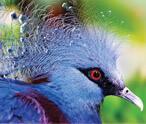
Victoria Crowned Pigeon
With its name...read more

Information About Flamingos
Flamingos are...read more

Hoopoe Bird
Famous for its distinctive crown of...read more
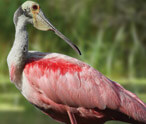
Roseate Spoonbill
The beautiful Roseate Spoonbill...read more
Latest Mammals
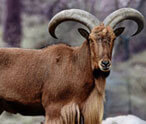
Types Of Goats
Goat is a mammal that belongs... read more
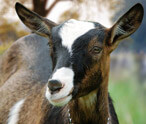
Goat Facts
A domesticated form the wild goat of...read more
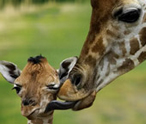
Giraffes Facts
Giraffes are creatures with extremely...read more



























Largest Birds of Prey in the World by Size and Weight
Also called raptors, the birds...
List of Birds That Fly in V Formation
Did you ever feast your eyes on the amazing phenomenon...
Birds of Prey List
A bird of prey is also known as a raptor or a hunter. It belongs to the group of...
Millipedes Vs Centipedes
Centipedes and millipedes are both arthropods from the group...
Difference Between Warm Blooded and Cold Blooded Animals
Every living organism...
Top 10 Extremely Dangerous Insects
The insects have been grouped in class 'insecta' of...
Sheep Vs Goat
The goat and the sheep are related to each other through the same family. They...
Animals with Blue-colored Blood
Humans and other vertebrates have red-colored blood running...
Birds, Mammals And Reptiles
Before coming to the question of common ancestry of birds...